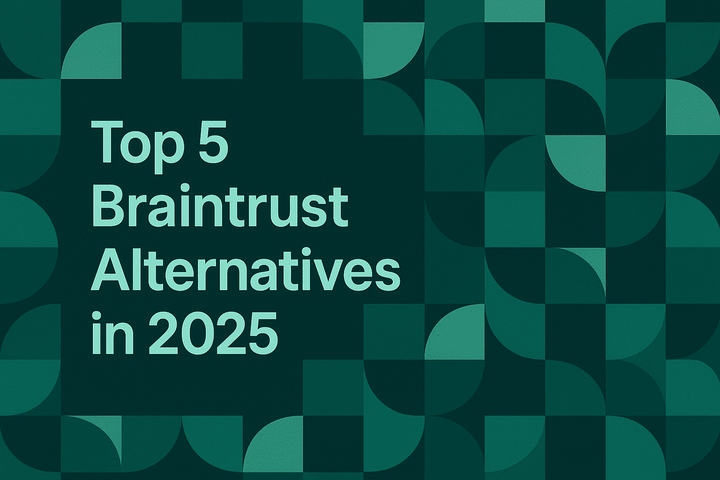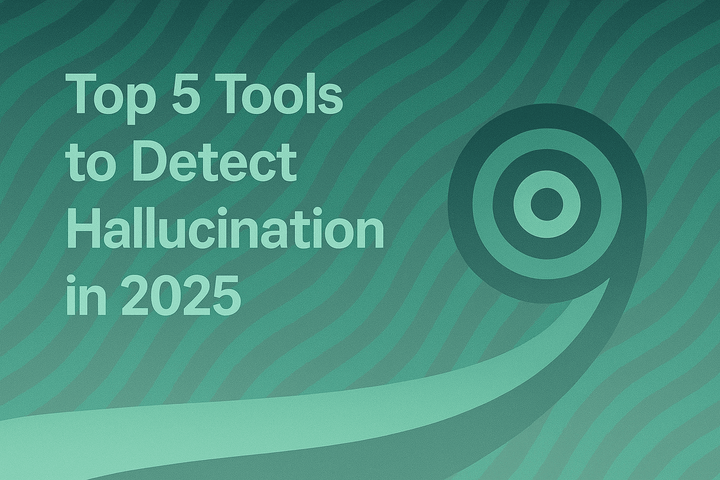Building a “Golden Dataset” for AI Evaluation: A Step-by-Step Guide

Modern AI applications (chatbots, copilots, RAG systems, and voice agents) live and die by the quality of their evaluations. If you cannot trust your evals, you cannot trust your releases. The most reliable way to achieve trustworthy AI evaluation is to curate a high-quality “golden dataset” that mirrors production reality, evolves with your product, and aligns with governance frameworks. This guide provides a practical, technical blueprint to build that dataset end to end, using proven industry guidance and productized workflows.
What is a Golden Dataset and Why It Matters
A golden dataset is a curated, versioned collection of prompts, inputs, contexts, and expected outcomes (plus rich metadata) that becomes the source of truth for measuring quality across your AI lifecycle , pre-release experimentation, simulations, evals, and in-production observability. Done well, it enables:
- Repeatable agent evaluation across versions, models, and workflows.
- Actionable agent debugging and llm tracing to pinpoint failure modes.
- Quantitative decision-making for prompt engineering, model router selection, and cost-latency-quality tradeoffs.
- Governance alignment for trustworthy AI with traceability and auditability.
Authoritative guidance emphasizes that evaluation should be treated as a discipline. Recent work outlines practical principles for dataset curation and measurement, including clear scope definition, representativeness, decontamination from training data, and continuous evolution. See the comprehensive survey and applied best-practices for LLM evaluation in A Survey on Evaluation of Large Language Models and A Practical Guide for Evaluating LLMs and LLM‑Reliant Systems for foundational perspectives on evaluation design and dataset construction (A Survey on Evaluation of Large Language Models, A Practical Guide for Evaluating LLMs and LLM‑Reliant Systems).
Align to Governance: NIST AI RMF and ISO/IEC 42001
Enterprises should align evaluation datasets and processes with established governance standards:
- The NIST AI Risk Management Framework highlights lifecycle-centric practices (map, measure, govern, manage) for trustworthy AI design, development, use, and evaluation (NIST AI RMF Overview, AI RMF 1.0 PDF).
- ISO/IEC 42001 defines requirements for AI management systems, emphasizing traceability, transparency, risk management, and continuous improvement , all of which your golden dataset should support via metadata, audit trails, and versioning (ISO/IEC 42001:2023).
These frameworks provide the governance backbone for accountable evaluations, and your dataset becomes the operational artifact that demonstrates adherence.
The Core Principles of a Golden Dataset
Leading evaluation guides converge on five dataset principles that directly translate into practical requirements:
- Defined Scope: Tailor datasets to your application’s tasks and components , e.g., end-to-end agent workflows, tool use, retrieval grounding, or voice-to-text stages. Clear scope avoids noisy metrics and accelerates agent debugging (A Practical Guide for Evaluating LLMs).
- Demonstrative of Production Usage: Curate from real logs, representative scenarios, and diverse user personas. Production fidelity ensures evals predict in-field performance and supports agent monitoring post-deployment (NIST AI RMF Overview).
- Diverse: Cover the true problem space: topics, intents, difficulties, languages, and adversarial behaviors. Diversity surfacing edge cases enables robust agent evaluation and reduces blind spots (A Survey on Evaluation of LLMs).
- Decontaminated: Prevent overlap with training data (foundation, fine-tuning, preference alignment). This avoids inflated metrics and ensures model generalization. Add checks for memorization signals, continuation matching, and string/embedding similarity (A Practical Guide for Evaluating LLMs).
- Dynamic: Treat your dataset as living. Continuously evolve with new failure modes, fresh content domains, changing user behavior, and updated compliance requirements (ISO/IEC 42001:2023).
Step-by-Step: Building Your Golden Dataset
1) Define Scope, Goals, and Metrics
- Scope: Identify evaluation units , session-level agent evals, trace-level rag evals, span-level tool outcomes, voice evaluation for ASR/NLU/agent responses.
- Goals: Prioritize AI reliability metrics that reflect user value: correctness, groundedness, completeness, step success, refusal appropriateness, latency, and cost.
- Methodology: Decide evaluator types for llm evals: deterministic (programmatic), statistical (regex/heuristics), and LLM-as-a-judge with clear rubrics and guardrails. For hallucination detection and groundedness, design tests that compare outputs against authoritative contexts.
- Governance: Annotate dataset elements to support ISO 42001 and NIST RMF traceability , provenance, reviewer identity, instructions, consent flags, risk tags.
Helpful references: evaluation task taxonomies and metric choices in the LLM evaluation literature (A Survey on Evaluation of LLMs, A Practical Guide for Evaluating LLMs).
2) Source High-Fidelity Prompts and Scenarios
- Production Logs: Extract representative sessions across segments and difficulty. Avoid personally identifiable information by applying privacy filters and governance controls (NIST AI RMF Overview).
- User Research: Collect prompts via targeted surveys and UX studies; ensure consent and policy alignment.
- SME-Designed Cases: Have domain experts author “must-pass” scenarios with explicit acceptance criteria; these become anchor tests for agent reliability.
- Adversarial Safety: Include red-teaming scenarios (hate, sexual, violence, self-harm, fraud) and jailbreak attempts so evals cover both utility and safety. For synthetic adversarial scenario generation principles, see Microsoft’s guidance on simulated datasets (Generate Synthetic and Simulated Data for Evaluation).
3) Generate High-Quality Synthetic Data (Silver → Gold)
- Synthetic Conversations: Use robust techniques to create varied, realistic interactions around your domain content; add controlled persona diversity and multi-turn complexity (Generate Synthetic and Simulated Data for Evaluation, Examining Synthetic Data , IBM).
- Grounding Corpus: For RAG evaluation, generate or curate passages with citations and freshness. Track source authenticity and license status.
- Human-in-the-Loop Upgrade: Start with “silver” synthetic data, then promote to “gold” via SME reviews, evaluator agreement checks, and bias audits (A Practical Guide for Evaluating LLMs).
4) Write Precise Annotation Guidelines and Rubrics
- Define outcome schemas: objective fields (correct/incorrect), rubric scores (0–1 or 1–5), rationales, and required entities/steps.
- Calibrate annotators: run pilot rounds, measure inter-annotator agreement, and refine guidance. Keep rubrics task-specific and consistent with governance frameworks (ISO/IEC 42001:2023).
5) Decontamination and Integrity Checks
- Exact/Substring Matching: Detect overlap with known training corpora (when available) and remove contaminated items.
- Continuation Tests and Memorization Signals: Probe whether models can reproduce long passages, indicating leakage risk.
- Embedding Similarity: Cluster near-duplicates and prune redundant items; enforce diversity across topics and intents (A Practical Guide for Evaluating LLMs).
6) Metadata and Schema Design
Attach rich metadata to each item for model observability and llm tracing:
- Context and Sources: URLs, document IDs, timestamps, licenses, and freshness windows.
- Scenario Tags: intent, persona, difficulty, language, safety category.
- Expected Elements: required entities, steps, cites for groundedness.
- Governance Fields: reviewer, audit trail, consent, retention policy, risk tags (NIST RMF categories: map/measure/manage/govern) (NIST AI RMF Overview).
7) Sampling and Size
Use a statistically meaningful sample size so your evaluation signals are robust. As a practical example, if you expect 80% pass rate and want a 5% margin of error at 95% confidence, plan for approximately 246 samples per scenario or slice. Adjust upward for multi-turn agent simulations, language variants, and high-risk categories (A Practical Guide for Evaluating LLMs).
8) Versioning, Evolution, and Release Gates
- Version Control: Maintain dataset versions that map to prompt versions and agent workflows; enforce release gates based on aggregate evals across critical slices.
- Drift Management: Continuously add real failure cases and update content domains to stay dynamic and representative.
- Auditability: Preserve evaluator outputs, rubrics, and changes for ISO 42001-style governance audits (ISO/IEC 42001:2023).
Operationalizing with Maxim AI
Maxim AI is built to make golden dataset workflows first-class across experimentation, simulation, evaluation, and observability , without compromising on developer experience or cross-functional collaboration.
- Experimentation (Playground++): Compare prompts, models, parameters with quantitative evals across large test suites; manage prompt versioning and deployment strategies from the UI. See advanced prompt engineering and deployment workflows in the product page (Experimentation: Playground++). This directly supports prompt engineering, prompt management, and llm evaluation for agentic systems.
- Simulation: Run agent simulation at session-level, evaluate trajectory quality, re-run from any step to reproduce issues, and measure agent reliability across personas and scenarios , ideal for building production-faithful datasets (Agent Simulation & Evaluation). Use simulations to grow silver datasets and promote to gold with human review, unlocking agent evaluation and voice simulation scenarios at scale.
- Evals (Unified Evaluator Framework): Configure deterministic, statistical, or LLM-as-a-judge evaluators, visualize runs across versions, and run human evaluations for last-mile quality. All aligned to multi-level tracing (session, trace, span) for agent observability (Agent Simulation & Evaluation). This supports llm evals, rag evals, agent evals, and voice evals with flexible instrumentation.
- Observability: Production-grade ai observability with distributed tracing, automated rule-based evaluations, real-time alerts, and in-product dataset curation , feeding your golden dataset with real logs and failure cases (Agent Observability). Ideal for llm monitoring, rag observability, and hallucination detection in live environments.
- Data Engine: Curate and enrich multi-modal datasets, create splits for targeted evaluations, and continuously evolve datasets from production data , the backbone for golden dataset management and agent monitoring pipelines.
- Bifrost (AI Gateway): Standardize multi-provider access with an OpenAI-compatible API, automatic failover, semantic caching, governance, and observability , ensuring reproducibility across eval runs and deployments. Explore features like unified interface, semantic caching, and governance for reliable evaluation infrastructure (Unified Interface, Semantic Caching, Governance, Observability).
Together, these capabilities enable end-to-end ai evaluation, agent observability, llm tracing, and agent debugging workflows that keep your golden dataset central and continuously improving.
Common Pitfalls and How to Avoid Them
- Overfitting to Synthetic Data: Balance synthetic and human-authored items; promote silver to gold via human-in-the-loop QA. Use simulations to find gaps but rely on SME calibration for mission-critical scenarios (Generate Synthetic and Simulated Data for Evaluation).
- Neglecting Decontamination: Memorized content yields misleading metrics. Enforce strict overlap checks and periodic audits (A Practical Guide for Evaluating LLMs).
- Missing Safety Coverage: Utility-only evals miss real-world risks. Include adversarial and jailbreak-like scenarios in the dataset design to support trustworthy ai goals (NIST AI RMF Overview).
- Sparse Metadata: Without rich metadata, you cannot slice, trace, or debug effectively. Invest in schema quality from the start to accelerate agent tracing and agent debugging in production.
Final Checklist: Ship with Confidence
- Scope is defined and traceable; governance tags align to ISO 42001/NIST RMF.
- Dataset is demonstrative, diverse, decontaminated, and dynamic.
- Rubrics are precise; evaluators reflect real user value.
- Sample sizes are adequate per slice, with statistical confidence.
- Versioning, audit trails, and release gates are in place.
- Observability and automated in-production evaluations feed continuous improvements.
Maxim AI helps teams operationalize this rigor (from prompt management and experiments to agent simulation, evals, and production monitoring) so you can ship AI agents reliably and more than 5x faster.
Get Hands-On
See how Maxim AI’s full-stack evaluation and observability platform can accelerate your path to a robust golden dataset and trustworthy releases. Book a live walkthrough today: Request a Maxim Demo or start building now with Maxim Sign Up.


